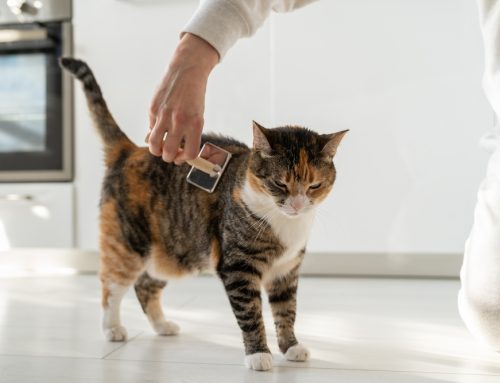If you share your home with a senior pet, you know he is special. Whether you’ve had your grey-faced friend since he was a youngster, or you’ve recently adopted a senior pet, there’s nothing as bittersweet as supporting your four-legged family member through his golden years.
Senior dogs come with a few perks their younger versions probably lacked. They’ve typically mellowed out and are easily satisfied with a short walk, rather than wearing you out playing frisbee as they did when they were younger. They’re quiet and humble, and they really don’t ask for more than food, a place to lay their tired heads, and a never-ending supply of love—which is returned, of course.
But, having a senior pet is not all rainbows and unicorns. As he ages, he likely will experience new health problems; for example, he may not hear or see as well, and he may get confused or agitated. While it is hard to see your beloved, faithful friend getting older, you are his advocate and his caregiver, and it’s up to you to guide him through old age gracefully.
Who are senior pets?
The average lifespan of a medium-sized dog is 10 to 15 years. For indoor cats, it’s a little more, and for large- and giant-breed dogs, it’s a little less. Of course, there are outliers—the oldest cat lived to be 38 years old, according to The Guinness Book of World Records—but since our pets’ lives are considerably shorter than ours, we must rethink “old age.”
Giant-breed dogs, like Great Danes, are the fastest to earn their senior discounts. Once these behemoths reach 5 years old, they’re considered senior citizens. All other dogs and cats become seniors on their 7th birthday.
Will my senior pet’s health requirements change?
The biggest change in caring for your pet will start as soon as he reaches senior status. While it was fine to see him once a year when he was younger, once he’s a senior, he should have a physical exam twice a year. With his shorter lifespan, your senior pet’s health status can change quickly, and seeing him twice a year will help our veterinary care team keep a close eye on his health and intervene before a small problem becomes a big problem.
At your pet’s first senior visit, we’ll perform a thorough physical exam. Starting at his head and working our way back, we’ll check for dental disease, vision changes, heart murmurs or arrhythmias, painful joints, and lumps and bumps. We’ll also obtain blood samples for a complete blood count (CBC), full chemistry panel, and a thyroid test. These tests at his first senior visit allow us to establish his health baseline.
We’ll also weigh your pet and discuss his body condition score. As his exercise requirements decline, he’ll likely need fewer calories, and his rations will need adjusting to prevent weight gain.
Next, we’ll talk about some of the things you may notice about your pet’s health during his remaining years, such as:
- The decline of major organs — Kidney, liver, and heart disease are common in older pets. You may see signs like increased water intake and urine production, changes in appetite, or respiratory changes, such as increased respiratory rate or coughing.
- Arthritis — Joint pain is extremely common in older dogs and cats, who may not limp despite being in pain. To identify potential areas of pain, we recommend thermal imaging, which records a pet’s skin-surface temperature. Areas that are unnaturally warmer than others indicate inflammation, and thus pain or injury. Subtle signs of joint pain include:
- Rising slowly, especially after a nap
- Sleeping on the floor instead of jumping onto the couch or bed
- Urinating or defecating outside the litter box
- No longer lifting a leg to urinate outside, for male dogs
- Aggression when handled, especially over the back and spine
- Cancer — Nearly half of the deaths in pets more than 10 years old are from cancer.
- Metabolic changes — Hormonal abnormalities are found more frequently in senior pets. Cats are prone to hyperthyroidism and diabetes, while dogs are prone to hypothyroidism and diabetes.
- Vision — Changes occur in the lenses as part of normal aging. A slight cloudiness, called nuclear sclerosis, may make it more difficult for your pet to see in the dark, but only cataracts will cause complete blindness.

- Hearing — Most senior pets will lose some hearing ability.
- Behavior — Cognitive dysfunction is common with advanced age. Your pet may become easily confused, trapped in a corner, or get lost in his own home. Changes in sleeping habits, such as sleeping more or staying awake and pacing during the night, are also common.
Watching your pet grow old can be difficult, so if you have questions or concerns, give us a call. Our goal is to help you ensure your pet enjoys an excellent quality of life for the remainder of his years with you.







Leave A Comment